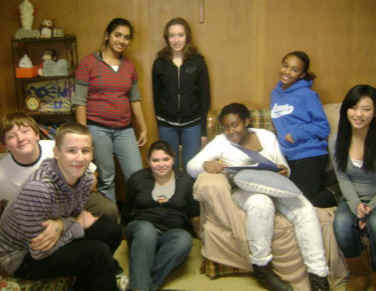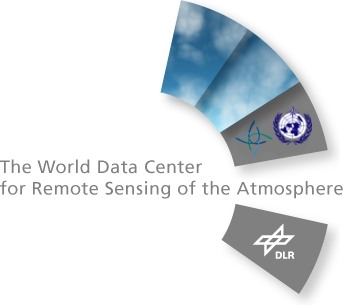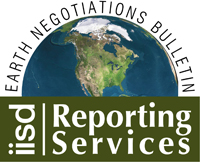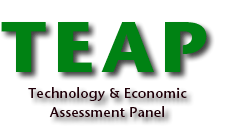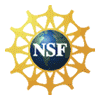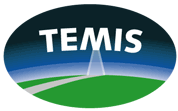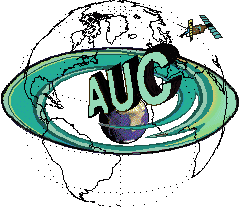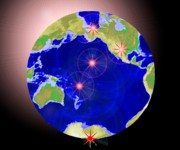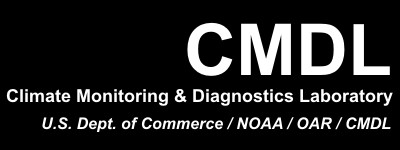|
Ozone Links
http://ozonewatch.gsfc.nasa.gov This is the Ozone Hole Watch web site, where you can check on the latest status of the ozone layer over the South Pole. Satellite instruments monitor the ozone layer, and we use their data to create the images that depict the amount of ozone.
Aura (Latin for breeze) was launched July 15, 2004. The design life is five years with an operational goal of six years. Aura flies in formation about 15 minutes behind Aqua. Aura is part of the Earth Observing System (EOS), a program dedicated to monitoring the complex interactions that affect the globe using NASA satellites and data systems.
NASA Ozone Resource page http://www.nasa.gov/vision/earth/environment/ozone_resource_page.html
The NASA Goddard Institute for Space Studies (GISS), at Columbia University in New York City, is a division of NASA's Goddard Space Flight Center Earth Sciences Directorate and a unit of the Columbia University Earth Institute. Research at GISS emphasizes a broad study of global climate change. The Center for Ozone Data & Information (CODI) Web Site at the Goddard Space Flight Center's Earth Sciences Atmospheric Composition Data & information Services Center (ACDISC). The purpose of this on-line information center is to enhance the support services we provide to our ozone research community. We've provided a number of resources here to help you in your research.
http://www.antarctica.ac.uk/met/jds/ Jonathan Shanklin British Antarctic Survey- This page points to the latest information on BAS ozone measurements and information about Antarctic weather.
http://exp-studies.tor.ec.gc.ca/e/ozone/ozone.htm Canadian ozone research had its start in the 1930s with studies on the temperature structure of the stratosphere. In 1957, ARQX began taking daily ground-based measurements at two stations, to examine the thickness of the ozone layer. At that time Dobson instruments were being used. Currently ARQX operates a network of 12 sites measuring total column ozone. In the 1980s, ARQX developed the Automated Brewer Ozone Spectrophotometer (collectively referred to as the “Brewer”) and installed it in the ground-based monitoring network. The Brewer is now operated in over 40 countries.
http://ozone.unep.org/new_site/en/index.phpOzone Secretariat - reports, publications, and press releases of the Secretariat for the Vienna Convention and the Montreal Protocol, as well as a wealth of other ozone related material.
The UNEP DTIE OzonAction Branch assists developing countries and countries with economies in transition (CEITs) to enable them to achieve and sustain compliance with the Montreal Protocol. With our programme's assistance, countries are able to make informed decisions about alternative technologies and ozone-friendly policies. http://www.unep.org/ozonaction
MACC stratospheric ozone service The MACC stratospheric ozone service consists of two main parts:
MACC - Monitoring Atmospheric Composition and Climate - is the project that is establishing the core global and regional atmospheric environmental services delivered as a component of Europe's GMES initiative. It is funded under the Seventh Framework Programme of the European Union and began on 1 June 2009. MACC is undertaken by a consortium drawn largely from the partners in the earlier GEMS and PROMOTE projects, whose core systems and service lines provided the starting point for MACC.
The Ozone Fighters- Ozone Fighters are students at St. James school in Madison Wisconson. The Ozone Fighters came with the idea of a website to inform kids around the world and in our community about Ozone Depletion and how it can effect us. It all started with a competition that the class had entered. With that, the group learned many things. They scheduled interviews at the UW of Madison for their competition. The Ozone Fighters thought, "Hey, we are leaning so much about this, why not share it with the world?" And that's how we came up with the idea to create this website. We created this website to share the beauty of the Earth and that we need to do our part to keep it beautiful.
http://wdc.dlr.de Primary focus of WDC-RSAT is to offer scientists and the general public free and simplified access (in the sense of a “one-stop shop”) to a continuously growing collection of atmosphere-related satellite-based data sets and services. These data holdings are available on-line and range from raw data collected by remote sensors to higher level data and information products. WDC-RSAT is supporting the development of user oriented value added products. The current WDC-RSAT data holding contains data and information on trace gases, aerosols, clouds, land and sea surface parameters, and solar radiation. This is achieved either by giving access to data stored at the data center or by acting as a portal that contains links to other data providers. Since 2003 the Applied Remote Sensing Cluster (German Remote Sensing Data Center, DFD, and Remote Sensing Technology Institute, IMF) of the German Aerospace Center (DLR) hosts and operates the World Data Center for Remote Sensing of the Atmosphere (WDC-RSAT) under the nongovernmental auspices of the International Council for Science (ICSU). As part of the ICSU-WDC family, WDC-RSAT is by definition integrated and linked to other WDCs worldwide. In addition, the World Data Centre for Remote Sensing of the Atmosphere is the most recent data center in the WMO-WDC family; in cooperation with the World Meteorological Organization (WMO), WDC-RSAT is currently being implemented as part of the WMO-GAW Strategic Plan 2008-2015 especially in the context of IGACO within the WMO program Global Atmosphere Watch (GAW). This center would concern itself with linking different GAW-relevant data sets both with each other and with models. In this context WDC-RSAT will also handle non-satellite based data which are relevant within the context of validation. Strategies and techniques to properly validate data sets, including for example data assimilation methods, are developed and tested. Aspects of the atmosphere’s variability at different temporal and spatial scales are addressed.
http://www.ozonelayer.noaa.gov/index.htm NOAA uses satellite, airborne and ground-based systems to continuously monitor stratospheric ozone as well as the chemical compounds and atmospheric conditions that affect its concentration. NOAA's Earth System Research Laboratory - Chemical Sciences Division (formerly the Aeronomy Laboratory), Earth System Research Laboratory - Global Monitoring Division, Climate Prediction Center and the National Climatic Data Center are actively involved in monitoring and research, which enhances the scientific understanding of ozone and the processes affecting its concentration in the stratosphere. This site provides information on these NOAA organizations, links to current and historical stratospheric ozone and climate data as well as information on the science of ozone. A list of NOAA representatives, recent ozone-related press releases and frequently asked questions are also provided via the pulldown menu above.
http://www.wmo.int/pages/prog/arep/gaw/ozone/ The Secretariat of the World Meteorological Organization issues bulletins containing information on the state of the ozone layer in the Antarctic at roughly two week intervals from August to November. The bulletins are based on data provided by WMO Members which operate ozone monitoring stations in the southern hemisphere and satellites to observe ozone globally.
http://www.epa.gov/ozone The Science of Ozone Depletion-Within this area you'll find information about the science of ozone depletion, information about the regulatory approach to protecting the ozone layer, and information on alternatives to ozone-depleting substances, as well as information on a number of other topics http://ozoneaq.gsfc.nasa.gov At this website we provide the results and ongoing data studies for the study of ozone and other gases, aerosols, radiances, and ultraviolet radiation, and what has been learned about atmospheric pollution and air quality from the international science missions making these measurements.
The mission of the NOAA Aeronomy Laboratory is: to discover and understand the chemical, dynamical and radiative processes that are important in the Earth's atmosphere, to improve NOAA's capability to predict its behavior.
http://www.esrl.noaa.gov/gmd/dv/spo_oz/
http://www.giss.nasa.gov/~dshindel/ Dr. Shindell's research is concerned with global climate change, climate variability, and Atmospheric Chemistry. He uses mathematical models of the atmosphere and oceans which run on supercomputers to investigate chemical changes such as the depletion of the ozone layer, climate changes such as global warming, and the connections between these two.
http://www.eumetsat.int About EUMETSAT The European Organisation for the Exploitation of Meteorological Satellites is an intergovernmental organisation based in Darmstadt, Germany, currently with 20 European Member States (Austria, Belgium, Croatia, Denmark, Finland, France, Germany, Greece, Ireland, Italy, Luxembourg, the Netherlands, Norway, Portugal, Slovakia, Spain, Sweden, Switzerland, Turkey and the United Kingdom) and 10 Cooperating States (Bulgaria, Estonia, Hungary, Iceland, Latvia, Lithuania, Poland, Romania, Slovenia and the Czech Republic). EUMETSAT is operating the geostationary satellites Meteosat-8 and -9 over Europe and Africa, and Meteosat-6 and -7 over the Indian Ocean.
http://www.iisd.ca/ozone/mop19/anniversary.htm Full coverage of the 20th Anniversary Seminar of the Montreal Protocol “Celebrating 20 Years of Progress” . Also many other events. The Earth Negotiations Bulletin is a balanced, timely and independent reporting service that provides daily information in print and electronic formats from multilateral negotiations on environment and development. It is published by the International Institute for Sustainable Development (IISD), a non-profit organization based in Winnipeg, Manitoba, Canada.The Earth Negotiations Bulletin began as the joint initiative of three individuals from the NGO community, who were participating in the preparations for the United Nations Conference on Environment and Development. Johannah Bernstein, an environmental lawyer and Director of the Canadian Participatory Committee for UNCED (CPCU), Pamela Chasek, a doctoral student at Johns Hopkins School of Advanced International Studies, and Langston James Goree VI "Kimo", a former UNDP programme officer and NGO activist from the Western Amazon, created the Earth Summit Bulletin in March 1992.
http://ozone.unep.org/new_site/en/assessment_panels_bodies.php?committee_id=6 The Web Site of the Technology and Economic Assessment Panel of the Montreal Protocol. The Montreal Protocol, administered by the United Nations Environment Programme (UNEP), is the international agreement to preserve the Stratospheric Ozone Layer that protects the earth from harmful radiation. This site provides technical information related to the alternative technologies that have been investigated and employed to make it possible to virtually eliminate use of the chlorofluorocarbons (CFCs) and halons that harm the ozone layer. .
NSF Polar UV Monitoring Network The National Science Foundation (NSF) Ultraviolet (UV) Monitoring Network was established in 1987 by the NSF Division of Polar Programs in response to serious ozone depletion reported in Antarctica. Biospherical Instruments installed the first instruments in 1988 and has operated the network since then. The network is providing data to researchers studying the effects of ozone depletion on terrestrial and marine biological systems. Network data is also used for the validation of satellite observations and for the verification of models describing the transfer of radiation through the atmosphere.
TEMIS aims to compute and deliver global concentrations of tropospheric trace gases, and aerosol and UV products derived from observations of nadir-viewing satellite instruments such as GOME, SCIAMACHY and (A)ATSR. TEMIS is part of the Data User Programme (DUP) of the European Space Agency (ESA).Within the TEMIS project, long-term data sets will be generated for ozone, UV, aerosols and several of the trace gases mentioned. Advanced retrieval techniques, chemistry transport modelling and data assimilation techniques will be used to derive high-quality tropospheric products based on the mesaurements of SCIAMACHY and GOME. These data sets will be made freely available through a user-friendly interface. http://www.temis.nl/protocols/O3global.html
http://bascoe.oma.be/index.html The Belgian Assimilation System of Chemical Observations from ENVISAT (BASCOE ) is an operational service providing chemical analyses and forecasts for the stratosphere from the assimilation of chemical observations made by dedicated instruments onboard ENVISAT.
Upper Atmosphere Data Support Web Site at the NASA Goddard Space Flight Center's Distributed Active Archive Center (DAAC). Here you will find data, information, and resources about the Earth's upper atmosphere; the region from the stratosphere and up. Please visit the Goddard DAAC homepage for other Earth science data and information. http://daac.gsfc.nasa.gov/CAMPAIGN_DOCS/ATM_CHEM/ozone_atmosphere.html
The ATMOS User Center (AUC)-The
ATMOS User Center (AUC) is a service of the
German Remote Sensing Data Center (DFD)
German Aerospace Center (DLR) .
http://www.atm.ch.cam.ac.uk/tour/index.html Ozone Hole Tour University of Cambridge, UK follows the discovery of the ozone hole and the resulting science and research on the phenomenon.
http://exp-studies.tor.ec.gc.ca/e/index.htm The Experimental Studies Division (ARQX) of the Meteorological Service of Canada (MSC) is part of Environment Canada and is located in Toronto. ARQX comprises four main areas of research interest: Space Studies, Ozone and UV Radiation Monitoring, Solar Radiation Studies and Field Experiments which include the management of the Arctic Stratospheric Ozone Observatory, Eureka, Nunavut in the high Arctic. ARQX also houses the WMO/GAW World Ozone and UV Radiation Data Centre (WOUDC), and participates in the Middle Atmosphere Initiative . http://exp-studies.tor.ec.gc.ca/cgi-bin/selectMap?lang=e Environment Canada's Select Ozone Maps
http://www.esrl.noaa.gov/gmd/ The Climate Monitoring and Diagnostics Laboratory (CMDL) of the National Oceanic and Atmospheric Administration
http://www.cpc.ncep.noaa.gov/products/stratosphere/sbuv2to/ NOAA National Weather Service Climate Prediction Center (CPC)
http://www.awi.de/en/home The Alfred Wegener Institute Germany's leading institute for polar and marine research
http://www.nas.nasa.gov/About/Education/Ozone This is a resource module for teachers and students interested in the ozone layer.
http://www.niwa.co.nz National Institute of Water & Atmospheric Research New Zealand’s leading provider of atmospheric and aquatic science
The Antarctic Sun is the official news web site for the United States Antarctic Program (USAP), which is managed by the National Science Foundation (NSF) Office of Polar Programs.
|












